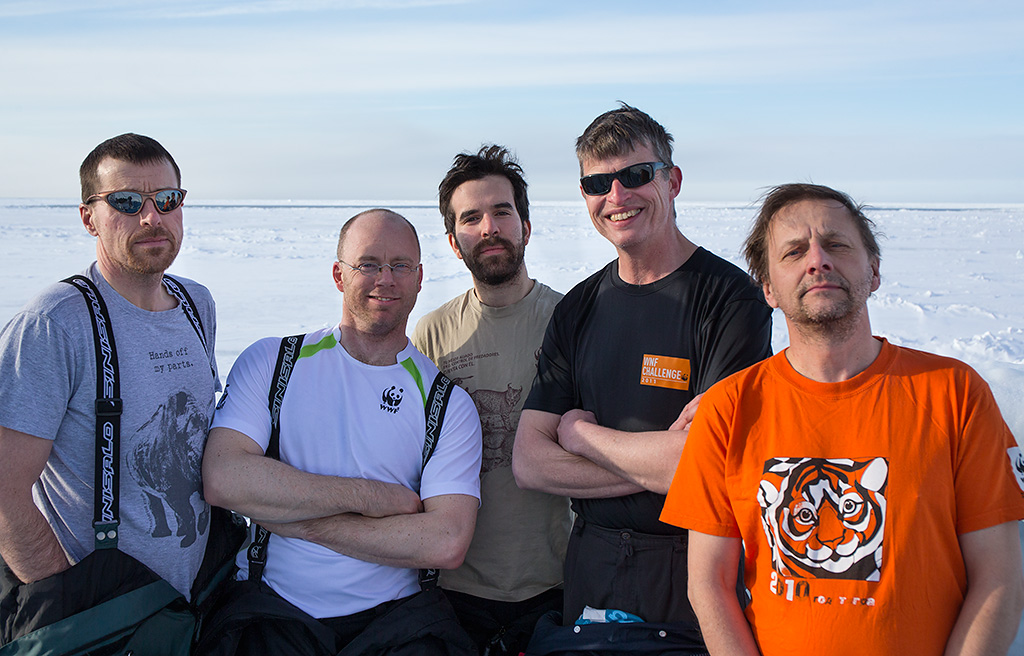From April 11 to 21, 2014, join a Norwegian Polar Institute and WWF-Canon scientific expedition to collect critical data about Europe’s most westerly polar bear population. The population on and around the Norwegian Arctic archipelago of Svalbard is facing a future without summer sea ice. See all posts from the expedition here.
April 21, 2014

The Svalbard team on a “warm” spring day in the Arctic. Left to right, Geoff York, Reinout Bolweg, Guillermo Prudencio, Gert Polet, Tom Arnbom. © Brutus Ostling / WWF-Canon
Today, we will wrap up the ship based portion of NPI’s spring polar bear survey effort. The seas have calmed into gently rolling swells by breakfast and mostly clear skies allow views of the southwestern shores of Spitsbergen and its namesake pointed mountains rising abruptly from the dark ocean. Northern fulmars continue to be our constant companions, soaring around the ship and her rigging. The captain estimates a 3 PM arrival into Longyearbyen where the ship and crew will refuel, restock, and prepare for their next research cruise scheduled for departure tomorrow night.
Jon, Magnus, and the helicopter crew will finish out the final two weeks of survey work flying from Longyearbyen, basing for several days at a research cabin on Barentsøya, and using fuel caches strategically placed around the island to extend their range. Weather limited our last few days of flying and survey work, especially in the northeast, so they still have a number of collars to deploy. I’ll also be interested to hear the final count of family groups observed, both mums with cubs from this year and yearling cubs from last year as an important indicator of reproductive success.
Monitoring wildlife takes time, financial investment, and effort to develop meaningful data sets over periods long enough to detect trends. Monitoring polar bears is further complicated by their remote and broad distribution across historically frozen seas in a part of the world that is largely inaccessible for many months of the year. The cost of setting up, running, and maintaining field camps is much higher and more logistically complicated than similar work elsewhere. The windows of time that polar bears are more easily accessible are also fairly short and much of our traditional work (observations, aerial survey, and aerial based capture) is highly weather dependent. Even with the best support and planning, there are few guarantees this far north.
Data gathered on this trip and in the coming year via satellite collars, geo-location ear tags, and TDR tags (Temperature and Depth Recorder) will add considerably to our collective understanding of polar bears in the Barents Sea, their use of habitat, and their response to change. To turn this data into information however requires long term monitoring, not just a single season. Even when conditions in the Arctic were more stable, there were always good and bad years for polar bears. The challenge is to separate the short term variation, what we would consider natural background fluctuations, from significant long term trends. Even more challenging but critical is to combine this with the best available projections on climate and sea ice to try and predict future responses of polar bears to expected loss of sea ice habitat.
